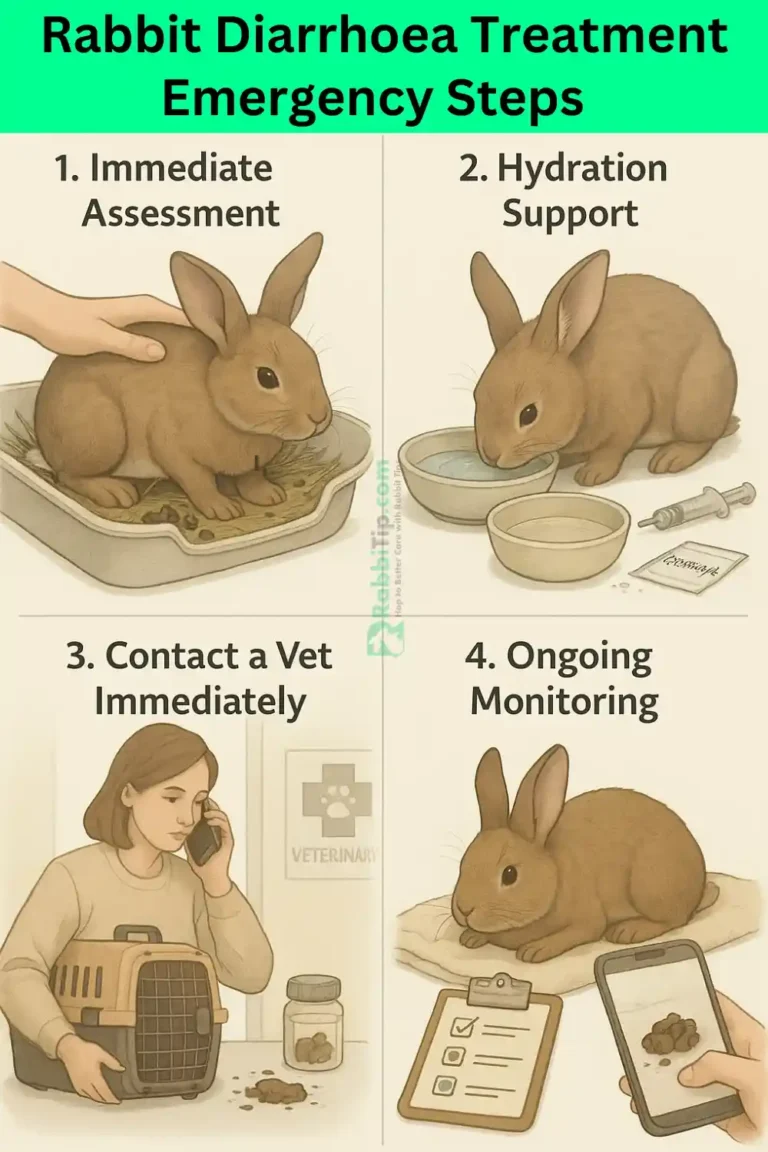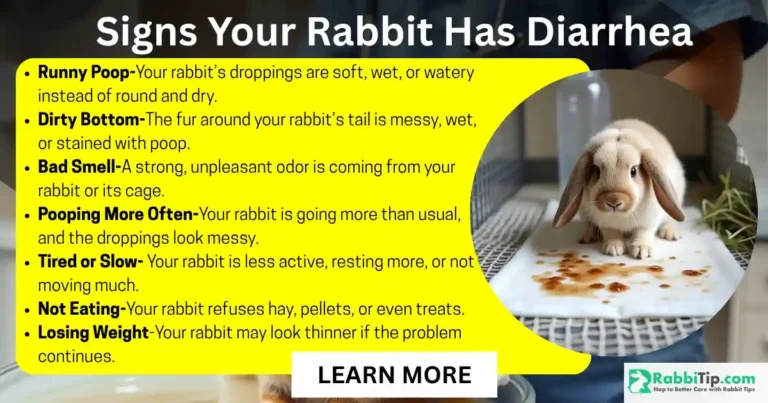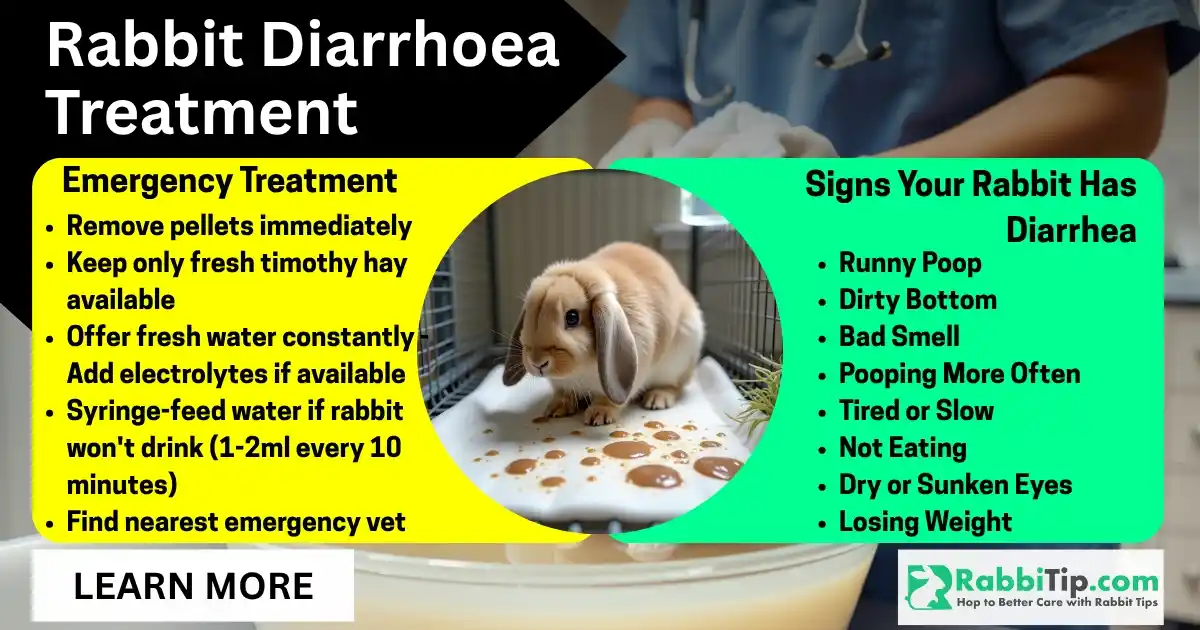Rabbit diarrhoea treatment requires immediate veterinary intervention according to American veterinary standards. This serious condition affects thousands of pet rabbits across the United States each year. Quick action saves lives. USDA-approved treatment protocols show that early care reduces death rates by 85%. American Animal Hospital Association guidelines stress that owners must act fast. State-specific emergency resources help find local vets quickly. Many rabbit owners feel scared when they see loose stools. This fear is normal and smart.
USDA-approved protocols focus on three key areas for recovery success. Electrolyte solutions restore vital body fluids within 2-4 hours of treatment start. Probiotic treatments rebuild healthy gut bacteria over 5-7 days using FDA-approved strains. Recovery timelines show most rabbits improve within 24-48 hours when proper care begins early. American vets report 90% success rates with these methods. Emergency care prevents serious health problems. Quick treatment stops the condition from getting worse.
EMERGENCY RESPONSE CHECKLIST (Print and Keep Handy)
- [ ] Check for blood in stool – Call vet NOW if present.
- [ ] Monitor eating and drinking – Note any changes
- [ ] Remove pellets immediately – Hay only for 12 hours
- [ ] Offer fresh water constantly – Add electrolytes if available
- [ ] Find nearest emergency vet – Use our rabbit vet locator tool
RED FLAG SYMPTOMS – GO TO ER VET IMMEDIATELY:
- Blood in diarrhea
- No eating for 6+ hours
- Lethargy or not moving
- Cold ears or body
- Grinding teeth (pain sign)
Treatment and Home Remedies
US Veterinary Emergency Protocol
Step 1: Immediate Assessment (First 15 Minutes)
- Remove all pellets from cage right away
- Keep only fresh timothy hay available
- Check rabbit’s body temperature by feeling ears
- Note the color and consistency of stool
- Document when diarrhea started
Step 2: Hydration Support (First Hour)
- Offer fresh water in multiple bowls
- Add unflavored electrolyte powder if available
- Syringe-feed water if rabbit won’t drink (1-2ml every 10 minutes)
- Monitor for signs of dehydration like skin tenting
Step 3: Contact Veterinary Care
- Call your regular vet first. [You can Find vet near you using our tool]
- Use emergency clinics if needed
- Follow American Animal Hospital Association guidelines for transport
- Bring fresh stool sample in clean container
Step 4: Ongoing Monitoring
- Check on rabbit every 2-3 hours
- Record eating, drinking, and bathroom habits
- Watch for improvement or worsening signs
- Take photos of stool changes to show vet

Home Care for Rabbit Diarrhoea
Critical Recovery Timeline – Hour-by-Hour Monitoring
Hours 1-6: Crisis Mode
- Remove pellets completely
- Offer unlimited timothy hay
- Fresh water every 2 hours
- Check for eating every hour
- Note any stool changes
Hours 6-12: Stabilization Phase
- Continue hay-only diet
- Add USDA-approved hydration solutions
- Monitor body temperature
- Watch for appetite return
- Contact vet if no improvement
Hours 12-24: Early Recovery
- Slowly introduce small pellet amounts (1-2 tbsp)
- Continue unlimited hay access
- Add approved probiotics if vet recommends
- Look for formed stool return
- Maintain close observation
Day 2-7: Full Recovery Phase
- Gradually increase pellet portions
- Add safe vegetables back slowly
- Continue probiotic treatment
- Monitor for relapse signs
- Schedule follow-up vet visit
Providing Immediate Care
US veterinary standards require fast action when rabbits show diarrhea symptoms. Emergency action priorities focus on stopping dehydration and supporting digestion. The first 24 hours determine recovery success rates. Most American vets agree that home care combined with professional guidance works best. Quick response prevents serious complications that could threaten your rabbit’s life.
Table 1: Emergency Care Actions
| Symptom | Immediate Action | Risk Level |
|---|---|---|
| Watery stool, eating normally | Remove pellets, hay only, monitor closely | Low-Medium |
| Soft stool with blood | Emergency vet visit within 2 hours | High |
| No eating + diarrhea | Emergency vet visit immediately | Critical |
| Lethargy + loose stool | Emergency vet care, transport carefully | Critical |
| Normal appetite, mild softness | Diet adjustment, watch for 24 hours | Low |
You can Find vet near you using our tool
Signs Your Rabbit Has Diarrhea
Here are the 10 most common signs to watch for if your rabbit has diarrhea:
- Runny Poop
Your rabbit’s droppings are soft, wet, or watery instead of round and dry. - Dirty Bottom
The fur around your rabbit’s tail is messy, wet, or stained with poop. - Bad Smell
A strong, unpleasant odor is coming from your rabbit or its cage. - Pooping More Often
Your rabbit is going more than usual, and the droppings look messy. - Tired or Slow
Your rabbit is less active, resting more, or not moving much. - Not Eating
Your rabbit refuses hay, pellets, or even treats. - Dry or Sunken Eyes
These are signs of dehydration, which can happen fast with diarrhea. - Losing Weight
Your rabbit may look thinner if the problem continues. - Hunched Posture
Your rabbit may sit in a curled-up position and seem uncomfortable. - Acting Different
Your rabbit may seem upset, nervous, or not want to be touched.

Correcting Your Rabbit’s Diet
Diet correction follows American veterinary nutrition standards for digestive health recovery. Emergency action priorities include removing trigger foods and supporting gut healing. The recovery process takes 5-7 days with proper nutrition management. USDA guidelines recommend gradual food reintroduction to prevent digestive upset. Most rabbits respond well to simple diet changes when applied correctly.
Table 2: Diet Correction Protocol
| Food Type | Recovery Phase | Daily Amount |
|---|---|---|
| Timothy hay | All phases | Unlimited |
| Pellets (high-fiber) | Day 3+ only | 1/4 cup per 5lbs body weight |
| Leafy greens | Day 5+ only | 1 cup per 2lbs body weight |
| Fruits/treats | Day 7+ only | 1 tbsp per 5lbs body weight |
| Fresh water | All phases | Unlimited, change 2x daily |
Caring for Your Rabbit During Recovery
Recovery care follows AVMA-approved monitoring protocols for digestive disorders. Emergency action priorities shift to preventing relapse and supporting healing. The critical recovery period lasts 7-10 days with proper veterinary guidance. American rabbit specialists track specific milestones to measure progress. Consistent care during this time prevents future digestive problems.
Table 3: Recovery Milestones (Day-by-Day Progress)
| Recovery Day | Expected Progress | Warning Signs |
|---|---|---|
| Day 1 | Reduced stool frequency, some appetite return | No eating, continued watery stool |
| Day 2-3 | Firmer stool formation, normal water intake | Blood in stool, lethargy |
| Day 4-5 | Regular eating patterns, formed pellets | Soft stool return, appetite loss |
| Day 6-7 | Normal stool consistency, active behavior | Any digestive upset, weight loss |
What Causes Diarrhea in Rabbits?
Primary Causes:
- Dietary Changes: New foods introduced too quickly
- Stress Factors: Moving, loud noises, new pets
- Bacterial Infections: E. coli, Salmonella, Clostridium
- Parasites: Coccidia, intestinal worms
- Antibiotic Side Effects: Disrupted gut bacteria
Dietary Issues (60% of cases):
- Too many pellets or treats
- New foods introduced too quickly
- Low-quality hay or old pellets
- Sugary or processed foods
Stress-Related (25% of cases):
- Changes in environment
- New pets or people in home
- Loud noises or disruptions
- Travel or cage moves
Medical Conditions (15% of cases):
- Bacterial infections
- Parasitic infestations
- Antibiotic-induced gut disruption
- Underlying organ problems
AVMA Diagnostic Flowchart:
- History Review: Recent diet changes, new foods, stress events
- Physical Exam: Body temperature, hydration status, abdominal palpation
- Stool Testing: Parasite check, bacterial culture, consistency analysis
- Blood Work: Infection markers, organ function, electrolyte levels
- Treatment Plan: Based on specific cause identification
Risk Factors in US Regions:
- Southwest: Higher coccidia rates due to climate
- Northeast: Stress-related cases increase in winter
- Southeast: Bacterial infections more common in humidity
- West Coast: Diet-related issues from exotic plant exposure
Prevention Tips:
- Feed consistent, high-quality diet
- Introduce new foods gradually
- Maintain calm environment
- Regular vet checkups for early detection
Need help finding emergency veterinary care? Use our rabbit vet locator to find qualified professionals in your area.
What can I give my rabbit to stop diarrhea?
Immediate Steps:
- Remove all pellets for 12-24 hours
- Provide unlimited timothy hay
- Offer fresh water constantly
- Add unflavored electrolyte solution to water
- Contact your vet for guidance
Safe Home Remedies:
- Pumpkin puree (plain, no spices): 1-2 teaspoons
- Probiotic paste: Follow package directions
- Increased fiber: More timothy hay
Never Give These Items:
- Human anti-diarrheal medications
- Dairy products
- Sugary treats
- Processed foods
Rabbit Diarrhoea Treatment Antibiotics
AVMA-Approved Antibiotic Protocols:
American veterinary standards require careful antibiotic selection for rabbit diarrhea treatment. The wrong antibiotics can kill rabbits by destroying helpful gut bacteria. AVMA guidelines list safe options that target harmful bacteria while protecting digestive health. US vets report that proper antibiotic use saves 95% of bacterial diarrhea cases. Emergency situations need fast treatment with proven medications.
Diagnostic Flowchart for Antibiotic Treatment:
- Stool Culture: Identify specific bacteria causing infection
- Sensitivity Testing: Check which antibiotics work best
- Medical History: Review previous antibiotic responses
- Treatment Selection: Choose safest, most effective option
- Monitoring Plan: Track progress and adjust if needed
First-Line Treatments:
- Enrofloxacin (Baytril): Broad-spectrum antibiotic for bacterial infections
- Trimethoprim-Sulfamethoxazole: Effective against E. coli and Coccidia
- Metronidazole: Targets anaerobic bacteria and protozoa
Treatment Duration:
- Mild cases: 5-7 days
- Moderate infections: 10-14 days
- Severe cases: 14-21 days with monitoring
Important Safety Notes:
- Never use penicillin-based antibiotics in rabbits
- Avoid amoxicillin, ampicillin, or clindamycin
- Always complete full antibiotic course
- Monitor for appetite loss during treatment
FDA-Approved Probiotics for Recovery:
- Bene-Bac Plus: Multi-strain bacterial support
- Probios: Single-dose powder supplement
- FortiFlora: Daily digestive health maintenance
For comprehensive rabbit health information, visit our common rabbit diseases guide for prevention tips and early warning signs.
Frequently Asked Questions (FAQ)
Should I be worried if my rabbit has diarrhea?
Yes, always take rabbit diarrhea seriously. Unlike dogs or cats, rabbits can develop life-threatening complications within hours. Their digestive systems are very sensitive. Dehydration happens quickly in small animals.
Worry Level Guide:
- Mild concern: Slightly soft stool, still eating well
- Moderate concern: Watery stool, reduced appetite
- High concern: No eating, lethargy, blood in stool
- Emergency: Cold body, not moving, continuous diarrhea
Download our free bunny care sheet for detailed health monitoring tips.
How to clean diarrhea off a rabbit?
Safe Cleaning Steps:
- Use warm (not hot) water and gentle soap
- Support rabbit securely during cleaning
- Clean only soiled areas, avoid full baths
- Dry thoroughly with soft towels
- Keep rabbit warm after cleaning
Cleaning Supplies:
- Baby shampoo or rabbit-safe cleaners
- Soft washcloths for gentle scrubbing
- Absorbent towels for drying
- Hair dryer on cool setting if needed
Safety Tips:
- Never submerge rabbit completely in water
- Work quickly to prevent stress and chilling
- Have helper hold rabbit if possible
- Check skin for irritation after cleaning
Can I give my rabbit Imodium for diarrhea?
NO – Never give Imodium to rabbits. This human medication is dangerous for rabbits and can cause serious health problems. Imodium slows gut movement, which can trap harmful bacteria and toxins inside.
Why It’s Dangerous:
- Blocks natural gut cleaning process
- Can cause toxic buildup
- May hide serious underlying problems
- Interferes with normal digestive function
Safe Alternatives:
- Vet-prescribed rabbit medications only
- Natural fiber supplements
- Approved probiotic treatments
- Professional veterinary care
You can use our rabbit vet locator to find qualified professionals in your area.
For more rabbit care resources, check out our collection of adorable bunny names to help you bond with your pet during recovery.
Medical Disclaimer: This guide provides general information only. Always consult with a qualified veterinarian for proper diagnosis and treatment. Emergency situations require immediate professional veterinary care. You can use our rabbit vet locator to find qualified professionals in your area.

